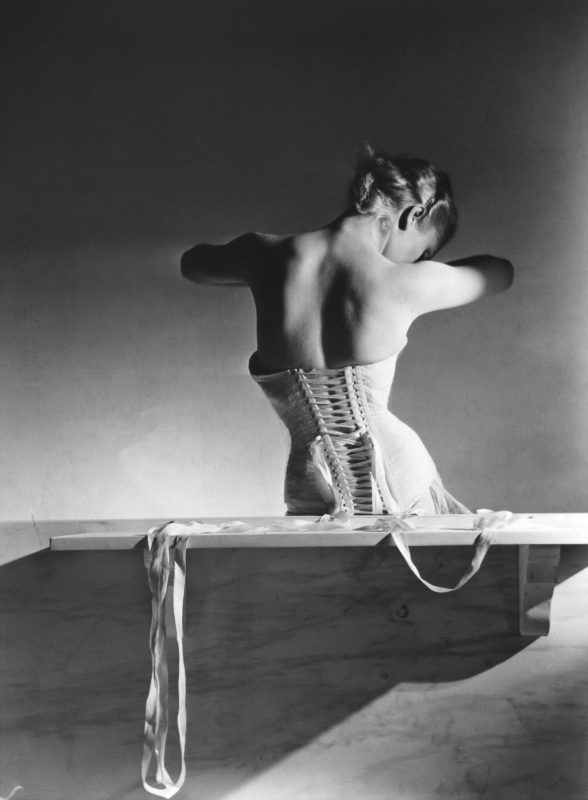In the following video, legendary photographer Horst P. Horst is interviewed by Barbaralee Diamonstein-Spielvogel, for the television program Visions and Images: American Photographers on Photography. This program was part of the Barbaralee Diamonstein-Spielvogel Video Archive at the David M. Rubenstein Rare Book and Manuscript Library, Duke University.
Horst P. Horst, who was born in Germany on August 14, 1906 and died in the United States on November 18, 1999 is best known for his photographs of women and fashion, but is also recognized for his photographs of interior architecture, still lifes, especially ones including plants, and environmental portraits.
One of the great iconic photos of the 20th century is “The Mainbocher Corset” with its erotically charged mystery, captured by Horst in Vogue’s Paris studio in 1939. Designers like Donna Karan continue to use the timeless beauty of “The Mainbocher Corset” as an inspiration for their outerwear collections today. His work frequently reflects his interest in surrealism and his regard of the ancient Greek ideal of physical beauty.
His method of work typically entailed careful preparation for the shoot, with the lighting and studio props (of which he used many) arranged in advance. His instructions to models are remembered as being brief and to the point. His published work uses lighting to pick out the subject; he frequently used four spotlights, often one of them pointing down from the ceiling.
Only rarely do his photos include shadows falling on the background of the set. Horst rarely, if ever, used filters. While most of his work is in black and white, much of his color photography includes largely monochromatic settings to set off a colorful fashion. Horst’s color photography did include documentation of society interior design, well noted in the volume Horst Interiors. He photographed a number of interiors designed by Robert Denning and Vincent Fourcade of Denning & Fourcade and often visited their homes in Manhattan and Long Island. After taking the photograph, Horst generally left it up to others to develop, print, crop, and edit his work.
One of his most famous portraits is of Marlene Dietrich, taken in 1942. She protested the lighting that he had selected and arranged, but he used it anyway. Dietrich liked the results and subsequently used a photo from the session in her own publicity.




